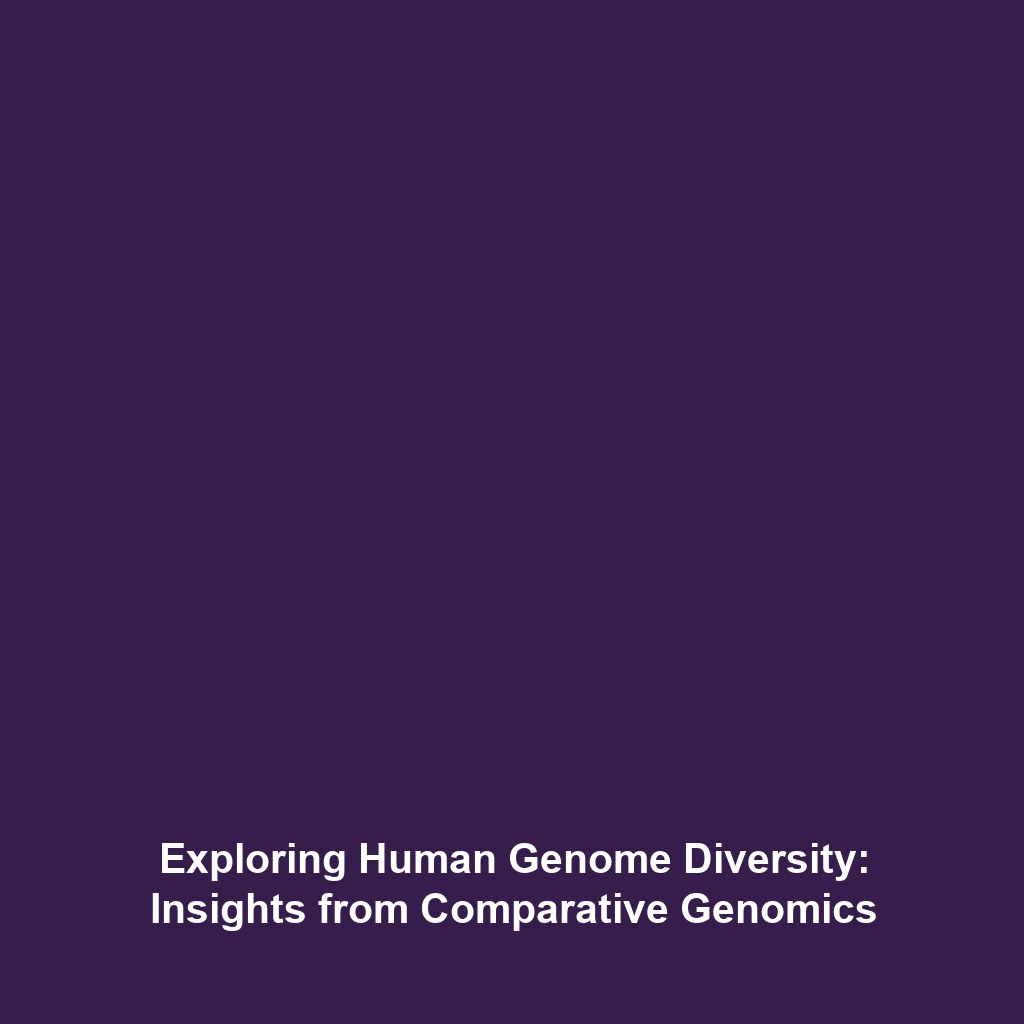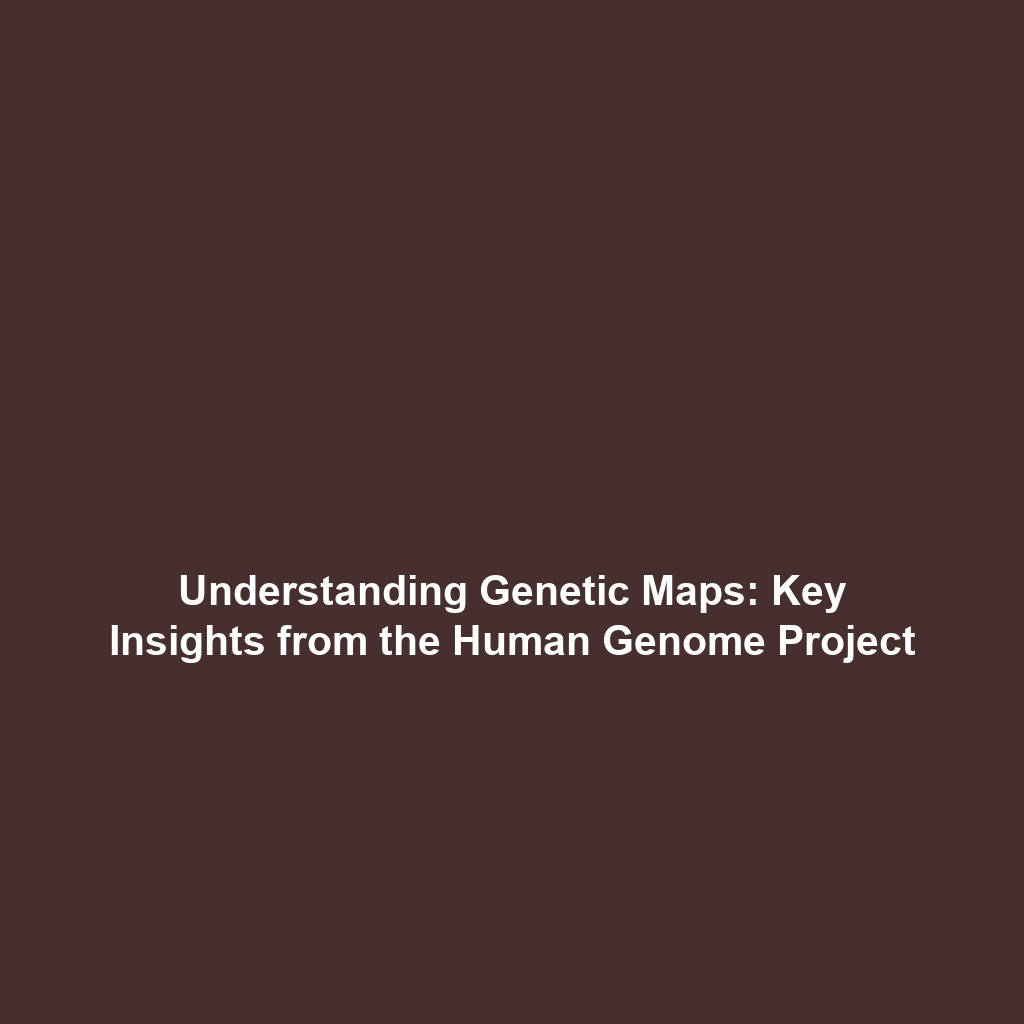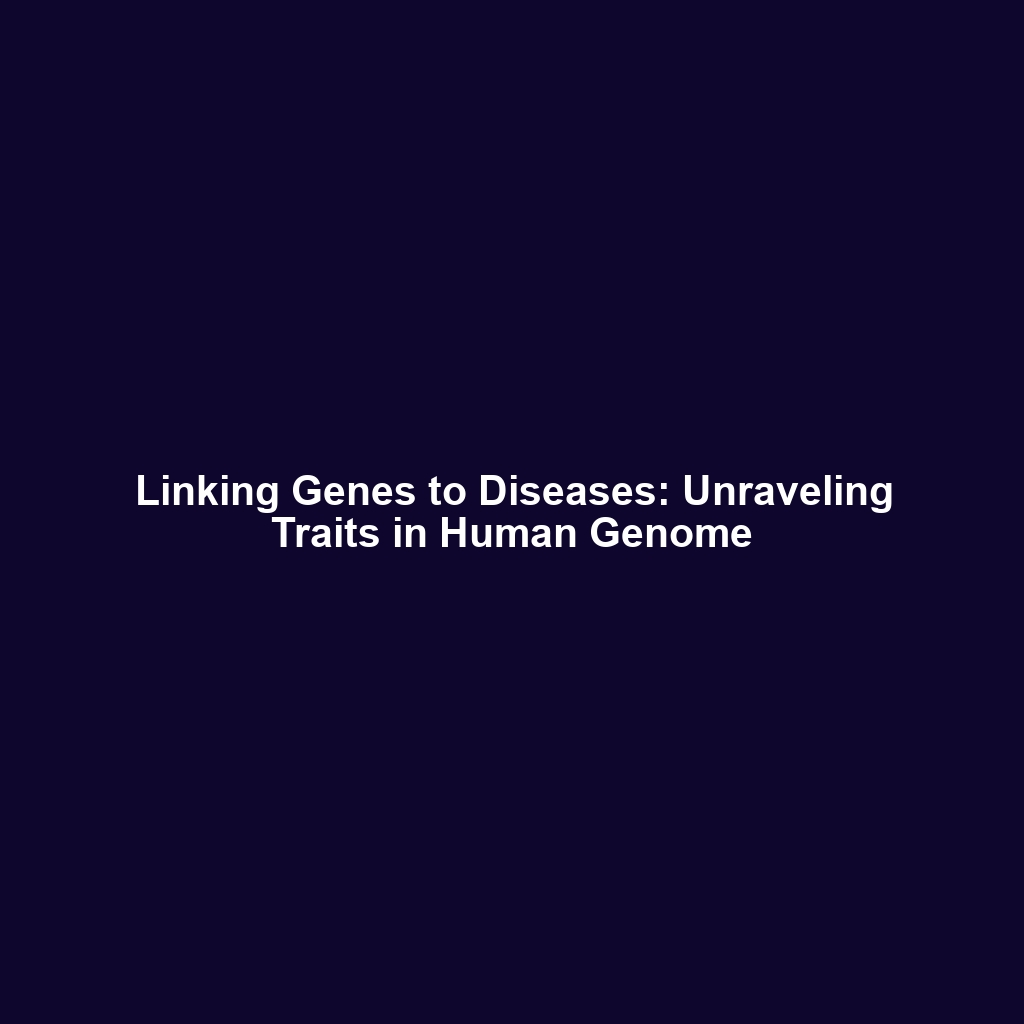The Implications of ENCODE’s Findings for Understanding Human Biology and Disease
Introduction
The Encyclopedia of DNA Elements (ENCODE) project has made significant strides in understanding the complexities of human biology and disease, shedding light on how genetic information regulates cellular functions. These findings build upon the groundbreaking work of the Human Genome Project (HGP), which mapped the human genome. By exploring the implications of ENCODE’s findings, researchers can better comprehend the intricate relationships between genetic elements and their roles in various biological processes, ultimately advancing our understanding of health and disease.
Key Concepts
Understanding ENCODE’s Role
ENCODE’s major principles center around the identification and characterization of functional elements in the human genome. Some key concepts include:
- Functional Genomics: The discipline that studies gene function and expression.
- Regulatory Elements: ENCODE identifies enhancers, promoters, and other non-coding regions that play crucial roles in gene regulation.
- Genome-Wide Association Studies (GWAS): Integrating ENCODE data enhances the understanding of genetic variants linked to diseases.
These concepts are critical in bridging the findings of the ENCODE project with those of the Human Genome Project, leading to a comprehensive view of gene-environment interactions.
Applications and Real-World Uses
The implications of ENCODE’s findings have numerous practical applications in the field of healthcare and beyond, especially within the framework established by the Human Genome Project. Notable examples include:
- Personalized Medicine: Utilizing genetic information to tailor treatments based on individual genetic makeup.
- Biomarker Discovery: Identifying genetic markers for diseases, improving early diagnosis and prevention strategies.
- Targeted Therapies: Developing drugs that specifically target dysfunctional regulatory elements derived from ENCODE data.
These applications highlight how ENCODE’s findings are pivotal in understanding and treating human diseases.
Current Challenges
Despite its significance, the application of ENCODE’s findings encounters several challenges within the broader context of the Human Genome Project. Key issues include:
- Data Overload: The vast amount of data generated can be overwhelming, complicating analysis and interpretation.
- Functional Validation: Confirming the functions of regulatory elements remains a significant hurdle.
- Ethical Considerations: Implications of genetic data usage raise ethical questions regarding privacy and consent.
Addressing these challenges is crucial for leveraging ENCODE’s findings effectively.
Future Research and Innovations
Looking ahead, several innovations and research directions are anticipated to evolve from ENCODE’s findings. Key areas include:
- Next-Generation Sequencing: Advancements in sequencing technologies will enhance our ability to analyze genome functionality.
- CRISPR Technology: Innovations in gene editing offer possibilities for correcting genetic defects and studying gene function directly.
- Machine Learning: Leveraging AI to analyze complex datasets from ENCODE to uncover novel biological insights.
These innovations promise to propel forward our understanding of human biology and disease.
Conclusion
In conclusion, the implications of ENCODE’s findings are profound for understanding human biology and disease, significantly expanding upon the foundational work laid by the Human Genome Project. As research continues to evolve, it is imperative for stakeholders in the medical and scientific communities to keep abreast of these developments. For further exploration, consider reading more about applications of ENCODE in medicine or delve into the challenges of genomic studies.




